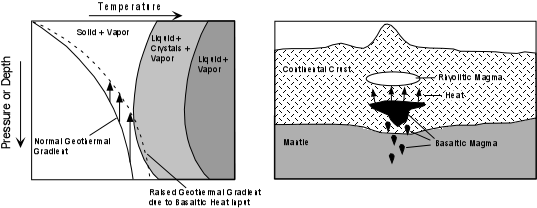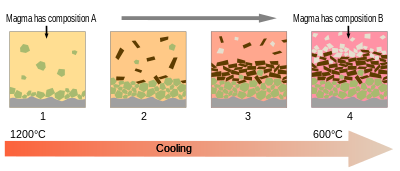Fractional crystallization or crystal fractionation is one of the most important geochemical and physical processes operating within crust and mantle of a rocky planetary body such as the earth.
Is granitic magma wet or dry.
Wet igneous rock melts at a lower temperature than the dry version of that same rock because a.
Other articles where granitic magma is discussed.
One major difference between basaltic and granitic magma is their specific mineral contents.
Wet igneous rocks form at shallower depth in the earth.
Thick and thin are kind of vague terms if you a referring to granatic and basaltic magma granatic meaning silica rich and high in water vapor basaltic meaning.
Since many crustal magma source rocks apart from granites s l do not contain both feldspars it is not congruent melting at the wet granite solidus that we need to consider but rather the higher t h 2 o saturated melting of quartz and plagioclase and the h 2 o saturated melting reactions that involve mica and or amphibole breakdown.
Granitic magma is a wet melt and the melting temp increases with decreasing pressure so that is solidifies as is rises to the surface aas pressure decreases.
It is made of wet continental crust that is melting and is found located at the continental crust.
Basaltic magma contains between 45 and 55 percent silicon dioxide and is high in magnesium iron and calcium while granitic magma contains between 65 and 75 percent silicon dioxide and only small amounts of those minerals.
Granitic magma is wet.
Opposite is true for dry basaltic magma it further melts as it rises to the surface what type of tectonic setting do you find the different magma types.
Granitic magma is wet.
This observation leads to a better understanding of the granitic structure of orogenic belts and explains some of the apparently paradoxical aspects of granites.
They occur on the seafloor where temperatures are already cold.
Dry igneous rocks are made of more felsic minerals.
Fractional crystallization is also important in the formation of sedimentary.
Wet granite magma cannot rise very far from its place of formation and only dry granite magma can be erupted as a liquid.
It is important in the formation of igneous rocks because it is one of the main processes of magmatic differentiation.
Granitic or rhyolitic magmas and andesitic magmas are generated at convergent plate boundaries where the oceanic lithosphere the outer layer of earth composed of the crust and upper mantle is subducted so that its edge is positioned below the edge of the continental plate or.
Granitic magma is also.
Granitic magma is wet.



























